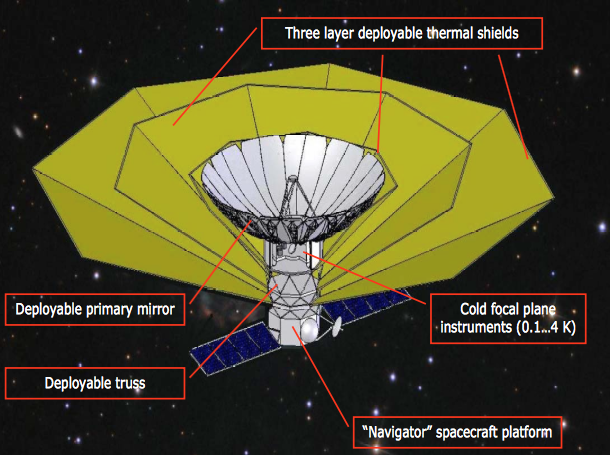[SatNews] Roscosmos reports the new Russian space observatory, Millimetron, is to be sent to orbit in 2025. This unit will help gathering information on Universe processes, learn what happens inside black holes, and provide new data on dark matter origin that is supposed to be responsible for universe expansion.

Millimetron mission observatory concept.
The Millimetron project is included in Russian Federal Space Program. The project was suggested by Astro Space Centre of Lebedev Physical Institute of Russian Academy of Sciences and was supposed to continue and develop the Radioastron project, the largest in the world space radio telescope, operating at the present time on the orbit along with 40 Russian and foreign ground-based radio telescopes.
Unlike Radioastron's perspective, the Millimetron space observatory will operate in another wavelength range from 0,3 to 17 millimeters, enabling it to increase the telescope’s angular resolution. Millimetron is expected to study the processes inside the black holes, capture the processes of stars and exoplanets formations, specify the data on dark matter.
In 2014 JSC Reshetnev Informational Satellite Systems made full-size mockups of the observatory's elements and began testing them.
The space device itself will be made on the basis of Navigator-M platform designed by Lavochkin. In 2025 Millimetron will be launched to its working orbit – L2 Sun-Earth Lagrangian point at the distance of 1,5 million kilometers from the Earth.
The Millimetron satellite (see fig. 1) has a deployable 12 m diameter antenna with inner solid 4 m dish and a rim of petals. The mirror design is largely based on Radioastron mission concept that will be launched in 2009. If the antenna is passively cooled by radiation to open space, it would operate at approx. 50 K surface temperature, due to presence of a deployable three layer radiation screen. As a goal, there is a consideration of active cooling of antenna to 4 K, but this will depend on resources available to the project.
There are two options considered for Millimetron, Lagrangian libration point L2 and elongated elliptical orbit of 70000-300000 km. The final decision will depend upon the scientific priorities and possibility of telescope active cooling possibilities.

